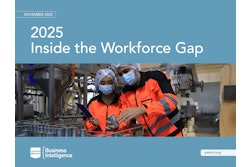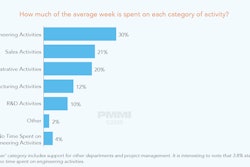In this episode we delve into the current and emerging trends within the pharmaceutical packaging machinery industry, with a special focus on AI's impact and the shift towards more reliable machinery. See the latest in pharmaceutical packaging machinery live and up-close at PACK EXPO East this March.
Sean Riley: So with all the fancy introductions out of the way, welcome to the podcast, Rebecca. Hi, Sean. It is our pleasure to have you on here to talk about all things pharmaceutical packaging. So I guess to start off, what are some general developments you're seeing in the pharmaceutical packaging machinery industry?
Rebecca Marquez: One of the things that recently happened is the pharmaceutical sector has announced the highest levels of production expansion investments during 2023. A large portion of the biggest pharmaceutical manufacturers have announced capacity expansion in the billions of dollars. And the majority of that investment is going towards expanding capacity in North Carolina.
Pharma dense part of the country. This has pushed our forecasted growth of packaging machinery shipments to the pharmaceutical sector up for 2023 and 2024. When we look compared to past years we're also seeing some slight changes to what pharmaceutical end users are looking for in terms of next generation improvements.
PMMI released a white paper on pharma manufacturing in 2022, and we recently updated that data and are seeing that some improvements that are being looked for are constant end users really do look for flexible and flexible and faster changeovers, and they're also looking for preventive and predictive maintenance capabilities.
So those two things in particular don't change much. But this year there are some slight changes in the emphasis that end users are placing on vision systems over robotics. So in 2022 robotics fared pretty highly in terms of what people are looking for, what end users are looking for in pharmaceutical equipment.
Now the change here to move to vision systems more than likely is due to the rise in a I a I supported vision systems are faster and more reliable than human visual inspection. So we attribute that change to this immense growth in AI.
Sean Riley: Interesting. So AI has even made its way into the pharma packaging machinery world.
Absolutely. So in the coming year, will pharmaceutical companies be changing how they evaluate machinery when deciding to invest?
Rebecca Marquez: Yeah, we are seeing some changes like the one I just mentioned, end users are looking more at things like vision systems. And then preventive and predictive maintenance capabilities.
But in 2022, when we first did this, ease of integration was really important. It was the most important factor when evaluating and comparing machines. This year, respondents to the survey are more focused on reliability and repeatability, which is interesting because, reliability, it's a little bit.
One would assume table stakes. It's always a need for end users, but the emphasis is really on reliability this year. Cost, of course, always ranks high as a point of comparison, and 2024 is no different than 2022 in this regard. Another change we're seeing is that there's less importance, at least in the pharmaceutical area, on post installation services.
So in 2022, post installation services were the third most important factor when evaluating machinery. And this year, they were the least important. We are seeing that though, not, that might be relegated to the pharmaceutical industry because we are seeing post installation services on the rise in other areas.
Sean Riley: I wonder why that would be. So I guess what are some other key trends that were uncovered in your latest survey?
Rebecca Marquez: There's definitely still some challenges such as lingering supply chain issues like Some CPGs are experiencing delays in receiving parts Some are experiencing difficulties in sourcing materials And there are some rising sustainability trends too.
Sustainability is still on everyone's minds these days One of the trends that does not seem to be changing, unfortunately, is labor, which just continues to be pretty challenging for manufacturers. On the upside, there is some growth in adherence packaging in the U. S. as we shift away from countables, and what I mean by countables are like counting pills and putting them in the little orange bottles that you're familiar with from pharmacies.
We're moving more towards blister packs and packaging formats of that nature. As for machinery trends, we're looking at pretty healthy projections for filling, closing blister skin and vacuum packaging and feeding equipment. And that goes right along with the shift away from. We're also seeing an increased presence of blended central fill facilities.
So the ability for third parties to fill prescriptions within the U. S. has been allowed by law for some time. Companies like Cardinal Health have operated central pharmacies in the past. However, the nature of this user type is changing. Central pharmacies can more be thought of as distributors of pharmaceuticals.
They're in between retail pharmacy and wholesaler, and they do serve multiple pharmacies, sometimes in multiple entities. So central pharmacies have been used by independent and change pharmacies for a while to control inventory costs of slow moving drugs and to achieve cost reduction through scale because these guys can hit a lot bigger audience. They're often discussed in the context of hub and spoke model. But we're, we are seeing trends in the growth of that as well, that style of selling.
Sean Riley: Interesting. So where can one find more research like this on pharmaceutical packaging?
Rebecca Marquez: Definitely at PACK EXPO East.
What we did when we updated our data from 2022 was we created an infographic and that will be available before PACK EXPO East. We did not do a full report because we weren't really sure how much had changed from 2022. There were some significant changes, but we figure an infographic is a really easy way to see what's going on in the industry.
So you will be able to get more information at PACK EXPO East, but also, if you go to PMMI.org, you can also find it in business intelligence under industry research.
Sean Riley: Awesome. Thank you, Rebecca, for taking time out of your day to come on here and talk to us about pharmaceutical packaging and pharmaceutical packaging machinery.
Rebecca Marquez: Thanks, Sean. Pleasure to be here.


![Frain2020 41[1]](https://img.oemmagazine.org/files/base/pmmi/all/image/2024/06/Frain2020_41_1_.666a0c6a1ffa0.png?auto=format%2Ccompress&fit=crop&h=167&q=70&w=250)


















